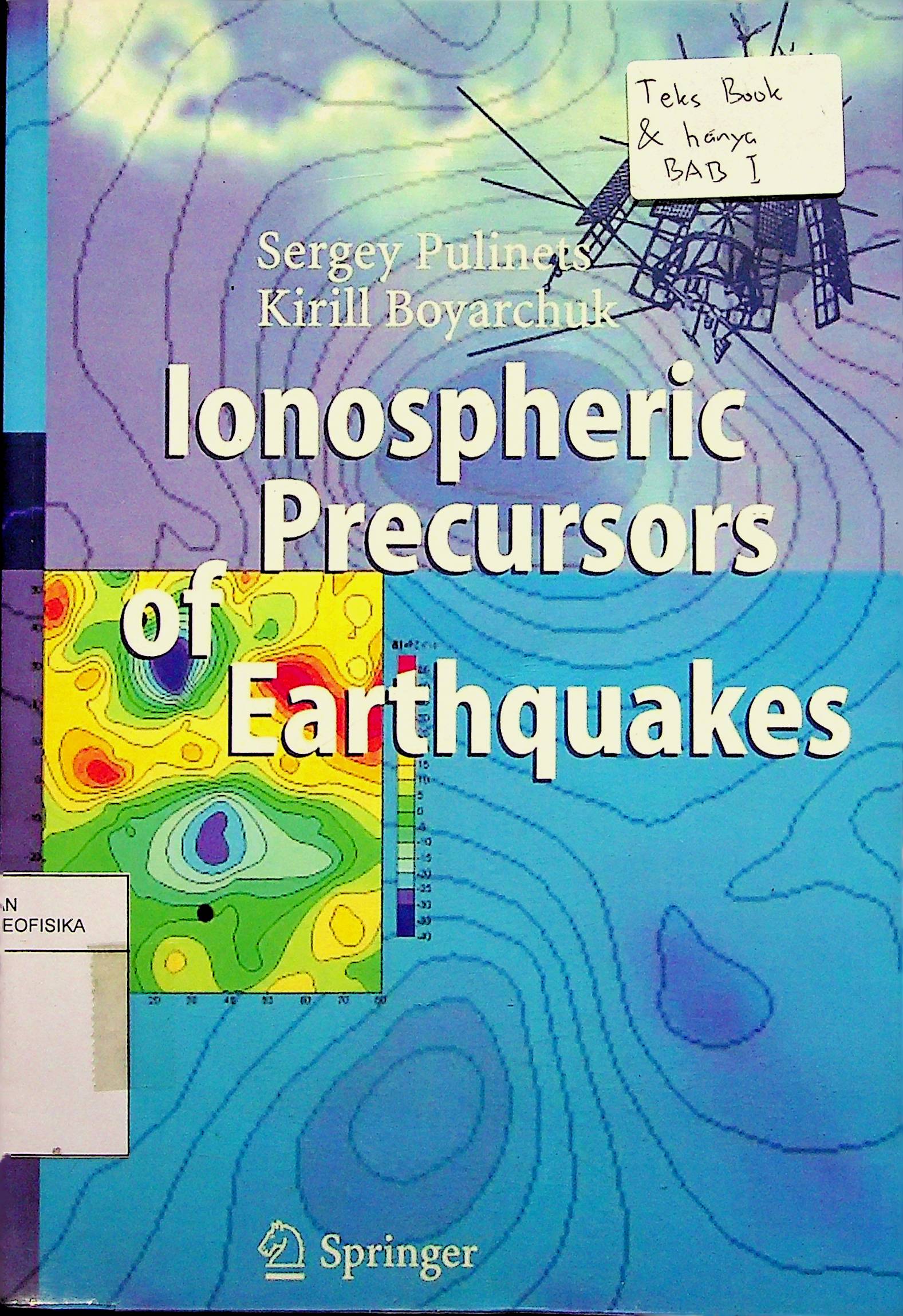Using the kind permission given to me by my co-author, this short preface will bewritten in my name. I want to devote this book to San Juan city in Argentina. It is not only due tothe fact that the city was twice completely destroyed after the devastating earthquakesin 1941 and 1977, but also because my stay there completely changed mylife. Changes included changing my career from the field of space plasma physicto Earth sciences and geophysics, and changes in my personal life giving me happiness and compliance in my present family. Going back to the subject of the book, it should be noted that the history of the question asked by the book is very complicated and intricate. Starting in the 1930s from the observation of seismogenic electric fields, the area of seismo-ionospheric coupling became an area of fighting and conflicts, hopes and frustrations. Speculation and misunderstanding on the interdisciplinary borders made this field for many years (even up to now) taboo for so-called "serious scientists". But due to the courageous efforts of several groups in Russia and the former USSR states such as Kazakhstan and Uzbekistan, Japan, later France and Taiwan, Greece and Italy the situation started to improve. From the late 80-th — early 90-th regular workshops started to be organized both as separate events (like the Chofu workshopsin Japan), and within the framework of the World’s main scientific Assemblies and conferences such as URSI, IAGA, EGS and COSPAR General Assemblies, Wroclaw International Symposium on Electromagnetic Compatibility,PIERS, WPGM (Western Pacific Geophysical Meeting) etc. This intensive work led to two major results. First, the field of seismo-ionospheric coupling and the electromagnetic precursors of earthquakes started to be acknowledged and internationallycoordinated. The common working group of URSI commissions E, G, H on Lithospherc-Atmosphere-Ionosphere Coupling was organized coordinating this activity within URSI, and in 2002 the IAGA-IASPEI-IAVCEI InterAssociationWorking Group on "Electromagnetic Studies on Earthquakes and Volcanoes (EMSEV)" was organized.The second very important result is that governmental bodies in different countries started to be involved in the practical application of the results of seismoionospheric coupling studies which led to the financing of several projects ofground based observations (FRONTIER projects in Japan, iSTEP project in Taiwan,PREVENTION project in Mexico), and satellite based studies of the ionospheric precursors of earthquakes: DEMETER (France), Warning and Varian (Ukraine), COMPASS and Vulkan (Russia), and the ESPERIA mission (Italy).
5
Ionospheric Precursors
Sergey Pulinets Kirill Boyarc
Penerbit :
Sprmger-Verlag Berlin Heidelberg
Tahun :
2004
Buku Text
-
No Scan130
-
No Klasifikasi538.767
-
ISBN
-
ISSN
-
No Registrasi009B012016
-
Lokasi Terbit
-
Jumlah Hal31
-
Label538.767 Ser i
-
Versi DigitalTIDAK
-
Versi FisikTIDAK
-
Lokasi Rak Buku Fisik//
-
Jumlah Exemplar Fisik Tersedia-







